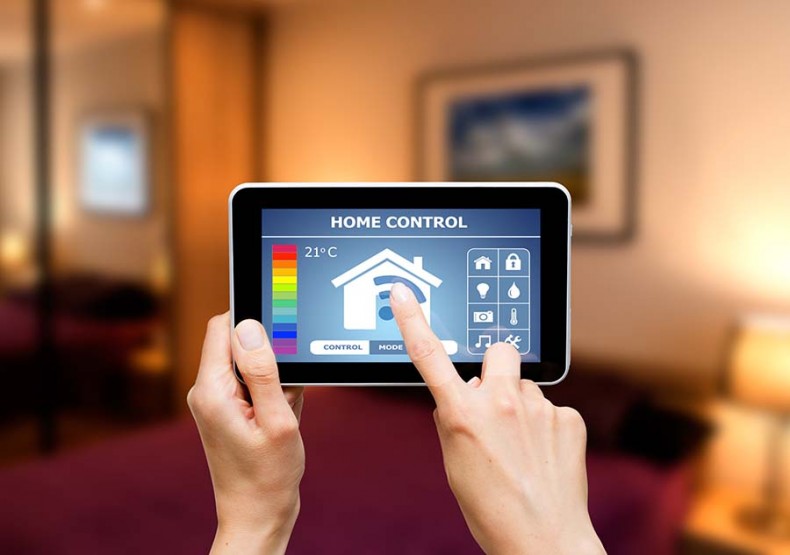Remote control
‘Smart home’ energy networks are evolving
By Brian Sloboda, Peter May-Ostendorp and Laura MoorefieldIf your house is equipped with high-speed, broadband Internet service, you can expand beyond “traditional” networked devices like computers and smartphones to include smart appliances, streaming media players, smart thermostats and other devices that can communicate with each other and the Internet.
These growing home networks — often referred to as smart homes, connected homes or referenced as the “Internet of Things” by technology media — can be used for a variety of applications, including security, lighting, health, entertainment and energy management.
At their most basic, home energy networks provide information on energy use and control over connected devices. Forget to turn off the lights or turn down the thermostat before going on vacation? Need to see how much money your home is spending to run laundry equipment? With home energy networks, there’s an app for that.
Advanced home energy networks can analyze use trends, suggest behavior changes, automate and optimize the setup of certain devices and frequently provide mobile apps to centralize settings and controls.
An example is a thermostat that users train to recognize their temperature preferences and away-from-home schedules. The more complicated the network and the greater number of connected devices, the deeper the potential energy savings and the more sophisticated these “orchestrations” can become.
In the most advanced systems, homeowners can create scenarios that effectively provide a “sleep” or “standby” mode for the entire house.
Of course, home energy networks require a lot more than a smartphone and software wizardry. There can be significant hardware investments, and many times products from one vendor can’t control products from another. Getting everything to work seamlessly from one app is the goal, but often you have to use multiple apps from multiple vendors for products to work.
We are still in the early stages of the smart home revolution, but there’s no denying it: advancements are taking place every day, and more and more people are discovering the convenience of controlling things remotely.
About the Author
Laura Moorefield founded Moorefield Research & Consulting, LLC, lives in Durango, Colo., and is a member of La Plata Electric Association. Peter May-Ostendorp founded Xergy Consulting and has been investigating emerging energy savings opportunities in buildings since 2004. Brian Sloboda is a program manager specializing in energy efficiency for the National Rural Electric Cooperative Association.-
Share this story:




